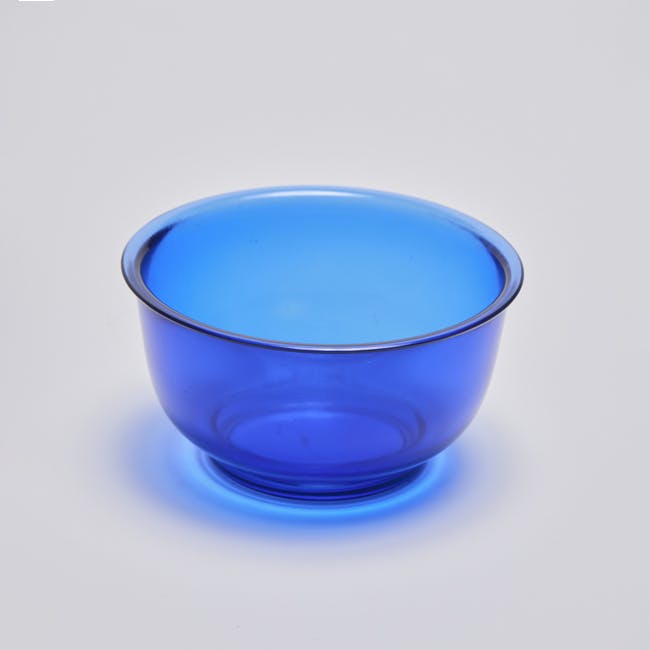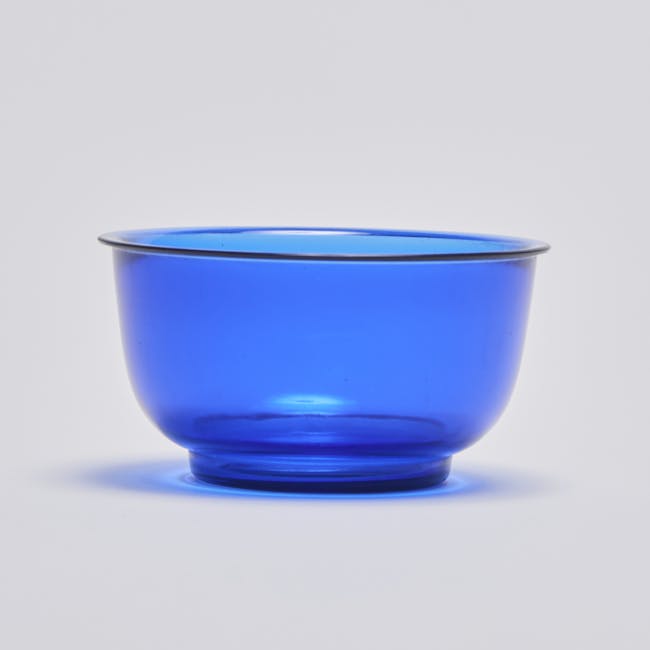Chinese production of glass already started in the Eastern Zhou period in the 6th century BC, perhaps even earlier. This craft progressed sporadically in an irregular evolution, but was fairly widespread by the Han Dynasty (206BC -220AD). The earliest examples of imported glass are came into China via the trading routes. These objects were made in the eastern Mediterranean - in the Roman Empire and present day Syria and Iran. China’s two main glass making centres were in Canton in southern China and the more renowned Boshan, in Shadong province in the North.
The early developments in glass production coincide with the rise of Daoism, who practised alchemy. They experimented with materials from nature, which when combined and heated created a new manmade material. These types of newly created substances – such as glass – were thought to have special powers such as to potentially avert evil or help achieve immortality. Glass was also thought to have the qualities appreciated in various coloured gemstones, such as healing powers., as they could look very similar.
But Chinese glass manufacture only made a truly great advancement by command of emperor Kangxi (1662-1722), who ordered the establishment of the Imperial Glasshouse within the Forbidden City in 1696. This new manufactory formed part of the extensive department of imperial artwork studios, which supplied the highest quality artworks for the royal family as well as diplomatic gifts and tributes. This particular imperial patronage, ultimately lead to the Golden Age of glass making in China during the 18th and 19th centuries.
Initially production was put under the supervision of the skilled German glass-maker and Jesuit priest Kilian Stumpf. They started to produce an entirely new range of objects such as vases, cups, bowls, snuff bottles, plant pots, incense burners and items for the scholar's desk. It is specifically the glass artefacts from these Imperial workshops, that are now also referred to as Peking Glass. Steadily the Chinese began to further perfect the art of glass-making, developing it into a new distinctive Chinese craft, in both form and decoration. This undoubtedly reached its peak in the Qianlong period (1736-1795). Most of the really experienced craftsmen in the Imperial workshops, had already previously worked with glass or jade. So uniquely, Qing Dynasty glassware is a mixture of European technical skill and Chinese production and carving abilities. This resulted in a bright blaze of colourful objects, both monochrome and polychrome, in beautiful shapes and with innovative finishes. The specialist craftsmen, often recruited from Boshan only worked seasonally in the Imperial workshops, as in the summer the heat from the furnaces made it too hot for manufacture. The craftsmen would then return to their own studios, producing glass of the same quality and style, but without the Imperial reign marks.
Chinese glass is generally made from silica (quartz sand), lead barium and a stabiliser which makes the glass water-resistant. The ingredients are heated together at high temperatures to melting point. Once the glass was melted it was put in a mould, and blown into shapes such as vases and bowls. Many objects were bright monochromes, but also polychrome when two or more colours were layered and carved in relief for a two tone effect. A decorative feature which developed in the 18th-century was the use of faceting. This is unusual, as a technique as it seems to be almost exclusively reserved for glass, unlike virtually every other decorative feature, which can be seen to be copied from other Chinese works of art, particularly ceramics. Glass wares could be either transparent or opaque, but always beautiful in form and spectacular in colour including breath taking yellows, reds, blues and greens seldom seen in other fields of Chinese decorative arts.
There is no doubt that the influence of Europeans, had much to do with both the ‘recipe’ and the finished product of the initial pieces produced in the workshops. But, even with their technical knowledge, a glass sickness known as ‘crizzling’ have affected some of the 17th-century and some early 18th-century pieces. This decomposition is caused by an excess of alkali in the metal, occurring in the majority of new glassworks until the recipe is perfected.



